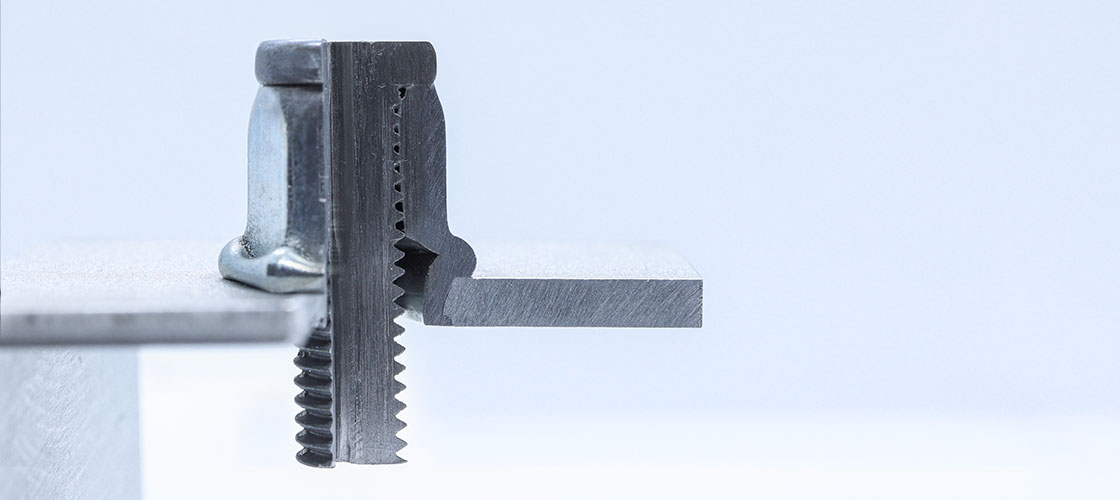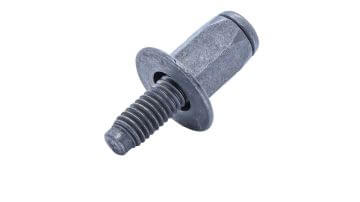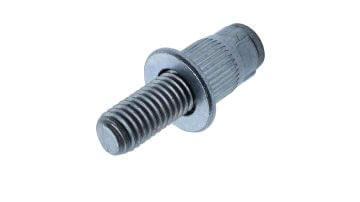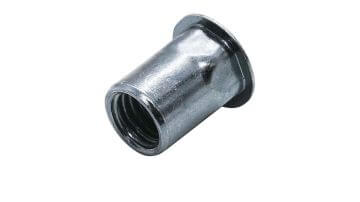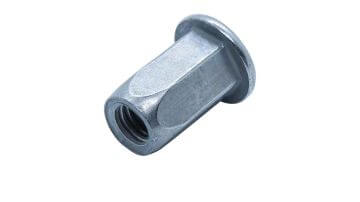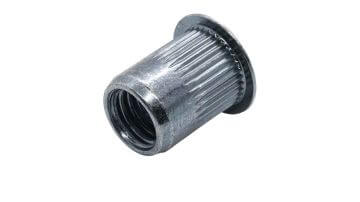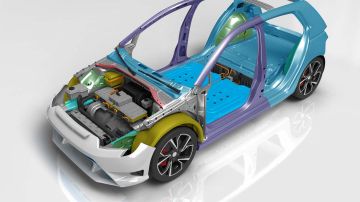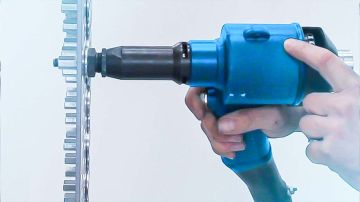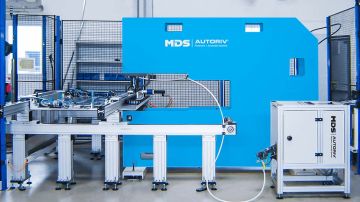Blind rivet stud partial hexagon / halfhex
for automated feeding and processing
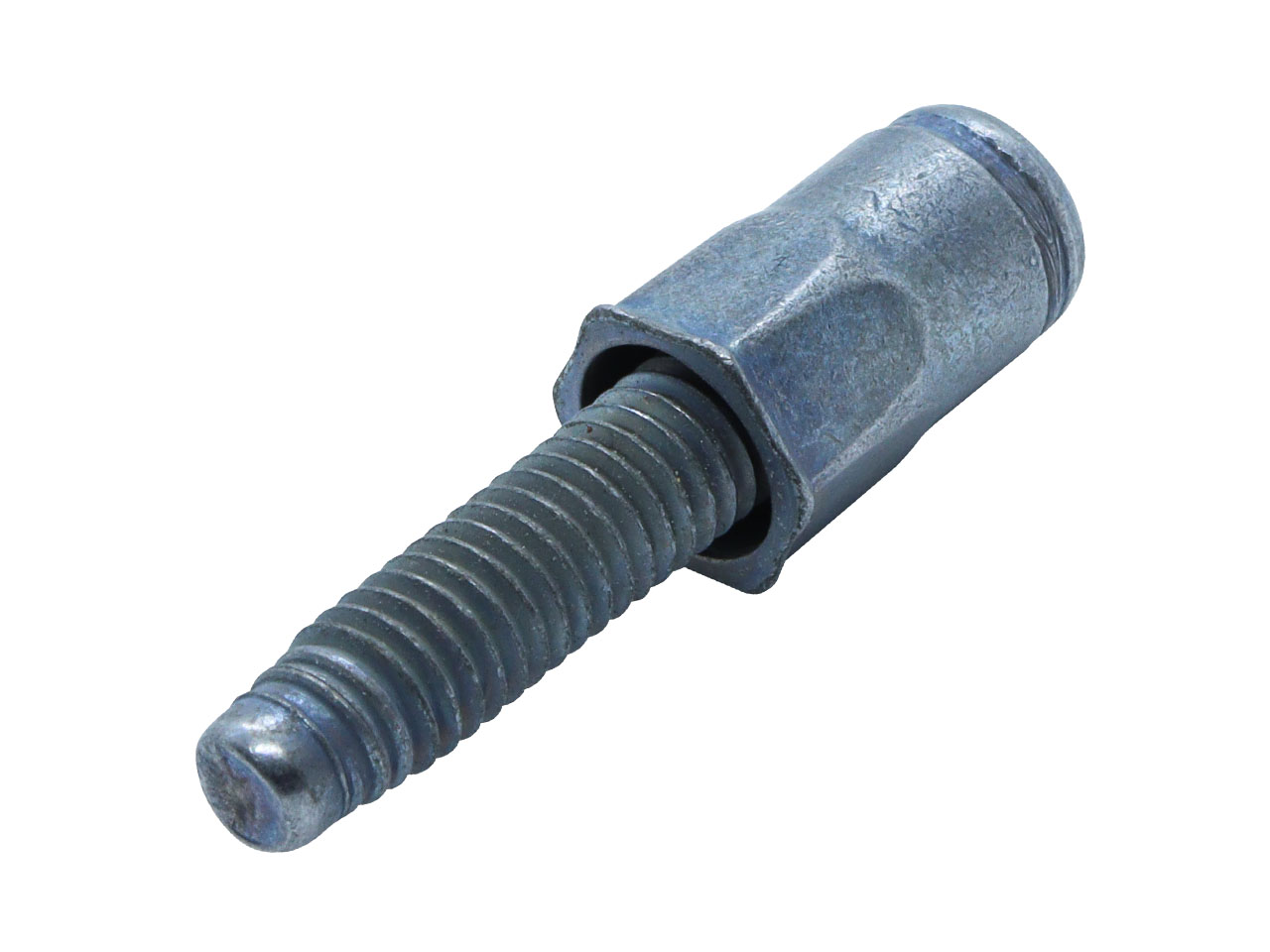
Blind rivet stud / screw with partial hexagonal shank / halfhex for for all-purpose application. It provides optimal fastening in harder materials. In use at car manufacturer OEMs in Germany, Europe and the USA.
Grip range - 0.5mm to 4.5mm in standard. In general, larger grip ranges are possible
Thread size - M4, M5, M6, M8, M10, M12
Fastener material - Steel, stainless steel, aluminum
Workpiece material - Aluminum, plastic, magnesium
Available with various head diameters and head heights:
Head geometry Push out force
Small / flush head Low
Large flange Very high
Body Shape Spin-out resistance
Halfhex Very high
For further specifications, see blind rivet nut partial hexagon / halfhex
| Thread proof load | Thread length | Thread end | Thread tolerance | Thread coating as an option | Surface protection | Special designs |
|---|---|---|---|---|---|---|
| Thread proof load according to strength class 8.8, 10.9, 12.9 possible | according to customer requirements | according to standard, as well as MaThread | 6g, 6h, 6e | Nycote, Precote | Various surface coatings possible, according to customer requirements | Wedged head, large/ reinforced head, closed end, sealed head / sprayed proof, high strength thread, internally floating thread (nut cage) for tolerance compensation |
Request for quotation
Would you like us to call you back? Leave your telephone number or e-mail and we will get back to you as soon as possible!
Application and function
Suitable for sheet metal: Suitable for all material variants
Pilot hole preparation: Hex-shaped pilot hole
Preferred use: Especially for one-sided joining positions e.g. difficult-to-reach positions, parts with undercut or overlap, closed profiles
Spin-out resistance – Hexagonal body vs. round body design: In comparison to blind rivet studs with a round body, the hexagonal shank provides significantly higher spin-out resistance, especially in harder sheet metal.
However, the requirement for using blind rivet fasteners with a hex body is that a hex-shaped pilot hole can be punched into the component. For heavy-duty applications, fullhex blind rivet studs are recommended.
Push-out force - Larger head diameter vs. countersunk head: For high push-out forces, blind rivet studs with larger head diameters and head heights are recommended. Blind rivet fasteners with a small countersunk head have only low push-out forces.
However, their advantage is that the created connection is almost flush with the sheet metal surface. The countersunk head is almost completely embedded into the sheet, so there is only a minor excess of the head above the sheet surface.
If near flushness is required, blind rivet fasteners with a countersunk head should be considered. Other than that, a larger head is recommended due to the higher push-out forces.
